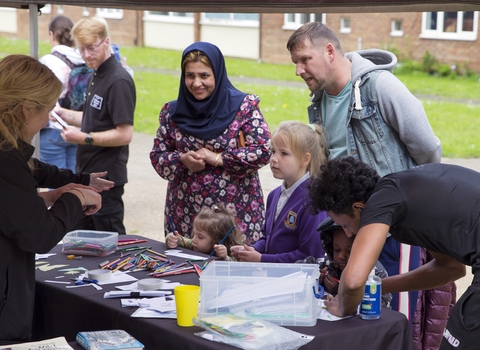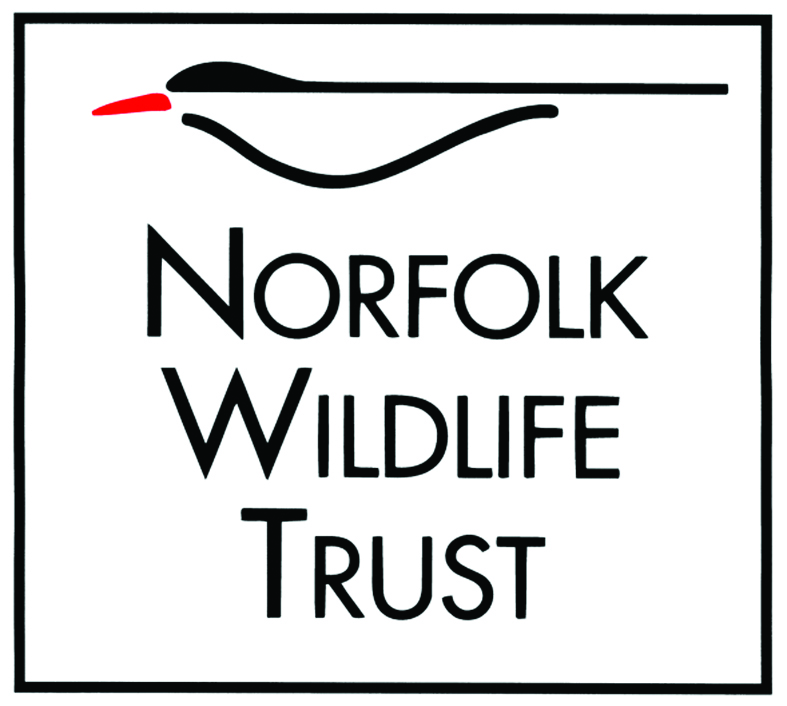
Geese at a local park (credit: Ben Hall)
Policy recommendations
We recommend the following (or similar) for inclusion as policies within Neighbourhood Plans, in order to help safeguard the environment and wildlife. Within these policy recommendations, we have included some general guidance.
Green infrastructure/green corridors
Sites and areas without designated nature conservation status may still be important for wildlife, with particular reference to other green infrastructure (GI). Through Neighbourhood Plans, these areas could be formally identified and provision made for habitat protection and enhancement.
Green Infrastructure is a network of multi-functional green space, urban and rural, which can deliver a wide range of environmental benefits, for example, increasing biodiversity, reducing flood risk and providing safe havens for wildlife. GI assets involving water can also be called ‘blue infrastructure.’ These assets include the following, although the list is not exhaustive:
Woodlands, fields, hedges, lakes, ponds, playing fields, street trees, green roofs/walls, parks, open spaces, allotments, roadside verges, rivers, canals, coastal habitats, lakes, SuDs.
Green infrastructure should be central to the design of development, ensuring the site is suitable for both wildlife and people. For further information see: Green Infrastructure Home (naturalengland.org.uk). This Framework has been developed to enable local communities to think more about GI and plan for its creation or improvement.
Green corridors should connect areas of existing green infrastructure. The ability to link habitats via green corridors is vital to allow wildlife to thrive.
Biodiversity
Biodiversity net gain (BNG) is an approach to development which means that habitats for wildlife must be left in a measurably better state than they were before the development occurred. Under the 2021 Environment Act, public authorities who operate in England must consider what they can do to conserve and enhance biodiversity in England. Government guidance published clarifies that, as a public authority, town and parish councils must also agree policies and specific objectives based on their consideration. We therefore recommend carrying out a biodiversity audit of the Neighbourhood Plan area. Further information and recommendations are provided here: Complying with the biodiversity duty - GOV.UK (www.gov.uk).
All developments should contribute towards nature recovery in Norfolk by protecting and strengthening ecological networks, deliver ambitious biodiversity net gain and ensure the protection of internationally, nationally and locally designated sites. We recommend policy wording to protect and enhance important sites for wildlife and high biodiversity, for example, County Wildlife Sites (CWS), Nature Reserves, Roadside Nature Reserves (RNRs), Priority Habitats etc.
There should be no net loss of area or condition of these sites.
We also recommend that Buffer zones are implemented around sensitive wildlife sites, as appropriate, to protect them from any adverse impacts from development.
The State of Nature report highlights the significant historical losses that have occurred across the UK and safeguarding what remains of our natural heritage is a vital cornerstone in nature’s future recovery.
The Environment Act 2021 made a 10% biodiversity net gain mandatory from February 2024. Given the pressures facing biodiversity, The Wildlife Trust recommends a greater ambition of 20% should be aspired to, to provide greater confidence in genuine gains for biodiversity and ensure the successful recovery of nature in Norfolk.
It is also useful to include a map in the Environment section of a Neighbourhood Plan, showing all the green infrastructure within a Neighbourhood Plan area, for example, County Wildlife Sites, Priority Habitats, Local Green Spaces, designated sites and any green corridors etc. This makes it clearer where opportunities exist for habitat connectivity and delivery of any biodiversity enhancements. Local Nature Recovery Strategies (LNRS) are now also an important consideration as they map the most valuable areas for nature.
To be supported development proposals must demonstrate how they seek to safeguard, retain, and where possible enhance, County Wildlife Sites, Priority Habitats, and other important wildlife and high biodiversity habitats, including Roadside Nature Reserves.
Ringstead Neighbourhood Plan
Local green spaces
The NPPF sets out that specific areas of land that are demonstrably special to the local community may be protected against development through designation as Local Green Space (LGS). Neighbourhood Plans provide great opportunities for recreation and leisure by creating new parks and gardens or designating local green space.
We recommend that a Neighbourhood Plan is ambitious in its designation of Local Green Spaces for inclusion in a ‘Local Green Spaces’ policy. These will be unique to each Neighbourhood Plan area and can provide numerous benefits to the local community, in addition to creating green corridors for wildlife and protecting valuable habitats.
Dark skies
Light pollution has an overall negative impact on bats and other wildlife, and species are affected in many different and numerous ways. It is imperative for the protection of wildlife that each of these: wildlife roosts, foraging habitat and commuting routes are protected from artificial lighting. Specific reasons for this are given in the best practice guidance document below.
Development proposals should demonstrate compliance with best practice guidance for avoiding artificial lighting impacts on bats. Where lighting cannot be avoided altogether in proposals then it must be designed to avoid light spill onto wildlife roosts, foraging habitat, and commuting routes for bats, birds, and other species.
Sustainable drainage systems (SuDS)
Climate change is predicted to deliver even more extreme weather in the future and Sustainable Drainage Systems (SuDS) are widely accepted as the way forward for addressing water management implications. Surface water management uses the landscape to control the flow of water, preventing or reducing pollution downstream. Development should incorporate Sustainable Drainage Systems (SuDS) and be designed to be an integral part of the green infrastructure and benefit wildlife.
The best sustainable drainage schemes incorporate a range of habitats that are good for water management and wildlife. Well-designed SuDS landscapes will often incorporate rain gardens, green roofs, temporary wetlands and a range of other living landscape features.
Disconnecting down pipes and diverting surface water away from drains through water butts and from impermeable surfaces along grassy swales, through basins, rain gardens and planters can turn uninspiring open spaces into vibrant, aesthetically pleasing areas full of wildlife.
For further information see: Sustainable Urban Drainage Systems SuDS.
New development must seek to reduce flood risk overall through creation of multifunctional green and blue infrastructure and include sustainable drainage systems (SuDS)…….. New build properties should contribute to sustainable drainage…….and by installing domestic-scale sustainable drainage systems (SuDS) which can include planters and rain gardens. Water harvesting, re-use and recycling should be incorporated…Chet Neighbourhood Plan
Energy Efficiency/Design/Climate Change
As we are facing a climate emergency, we recommend including a policy to help to tackle climate change at a local level. All new development should maximise its environmental sustainability and strive for high quality design that meets the climatic targets for CO2 emissions. Development options should result in the biggest carbon reductions. New homes should include built-in low carbon heating sources, use low carbon building materials and come equipped with low carbon technology. Homes built to very high energy efficiency standards, particularly zero carbon, should be considered as delivering a significant benefit. The following document is very useful for advice and guidance: The Climate Crisis (tcpa.org.uk)
Community Projects
Many Neighbourhood Plans include Community Projects in addition to specific policies. We recommend involving the community in a range of biodiversity projects, for example, tree and hedgerow planting, sowing wildflower strips, bird box making etc.

Lefroy Road Estate Urban Wild Project (credit: Jimmy King)
Community projects
Many Neighbourhood Plans include Community Projects in addition to specific policies. We recommend involving the community in a range of biodiversity projects, for example, tree and hedgerow planting, sowing wildflower strips, bird box making etc.
